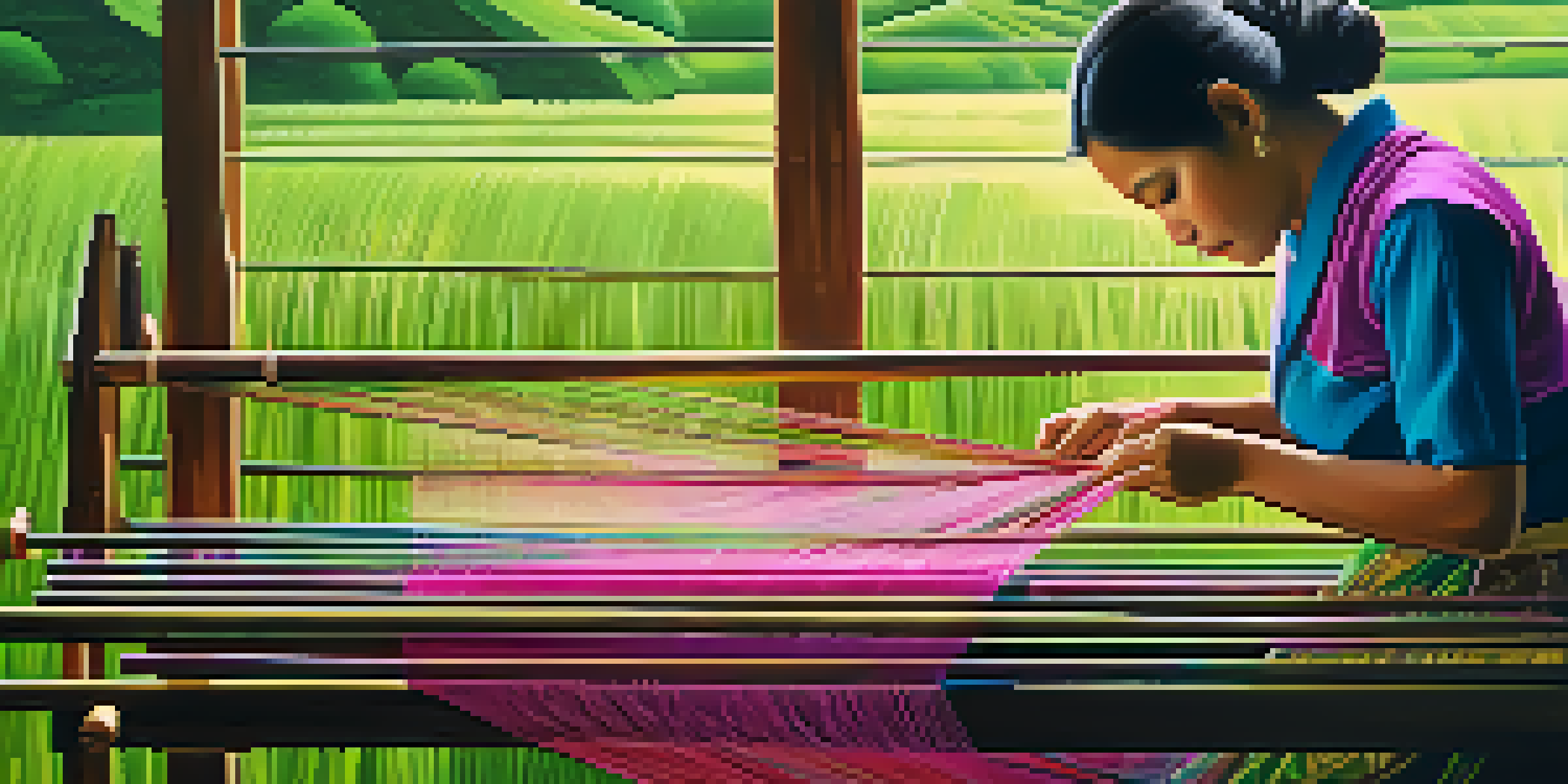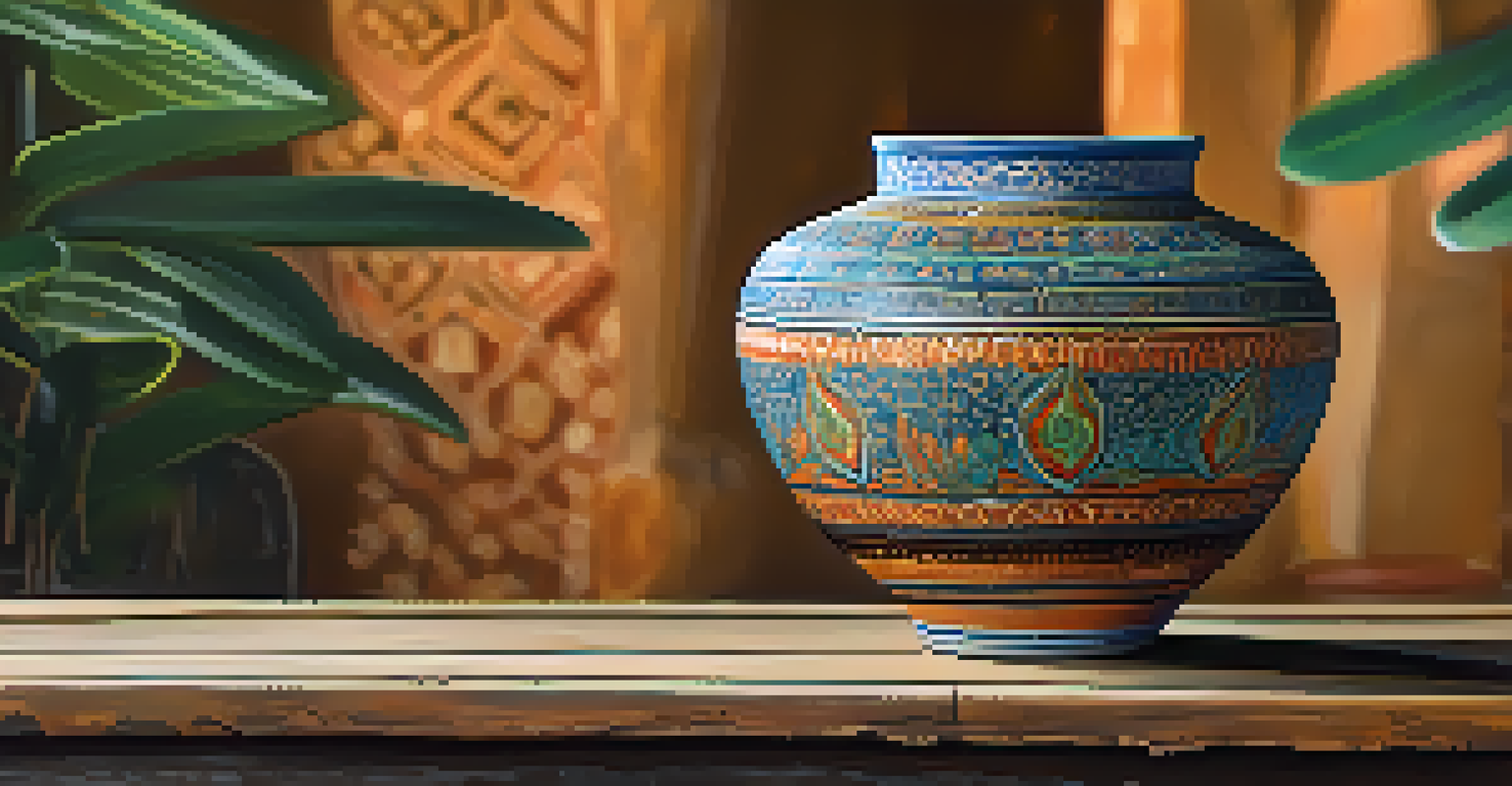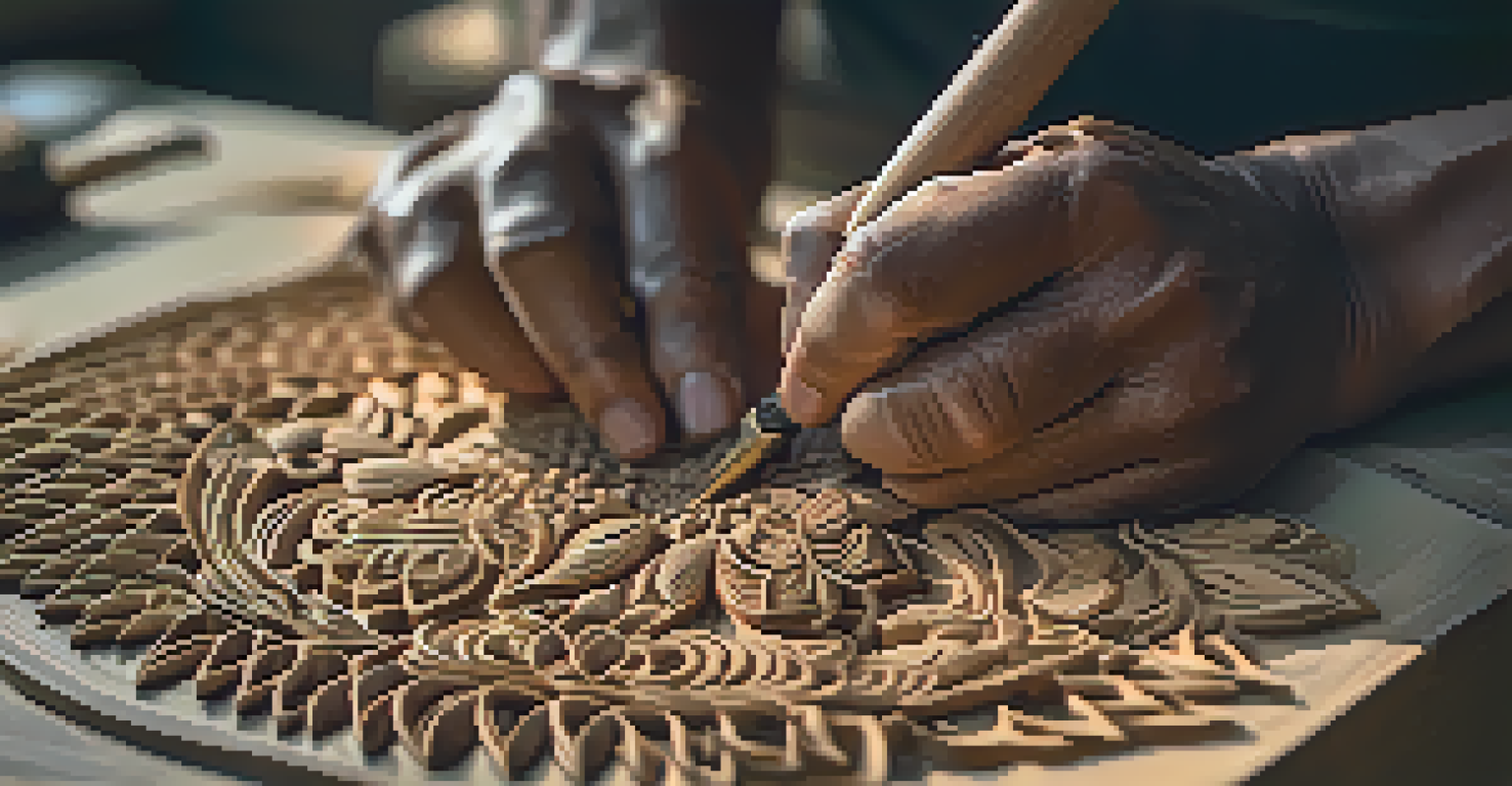An Overview of Traditional Thai Arts and Crafts Techniques

Introduction to Traditional Thai Arts and Crafts
Traditional Thai arts and crafts are a vibrant reflection of the country's rich cultural heritage. They encompass a variety of techniques that have been passed down through generations. From intricate silk weaving to stunning pottery, each craft tells a story about Thai history and values.
Art is not a thing; it is a way.
These art forms are not just about aesthetics; they embody spiritual and cultural significance. For example, many crafts are tied to Buddhist traditions and rituals, highlighting the deep connection between art and spirituality in Thai culture. This interplay adds layers of meaning to every piece, making them unique.
As we explore the various techniques, we’ll uncover how they have evolved while still maintaining their essence. Understanding these crafts will provide a greater appreciation for the skill and dedication of Thai artisans.
Silk Weaving: A Timeless Tradition
Thai silk weaving is a celebrated craft, known for its luxurious texture and vibrant colors. The process begins with the careful cultivation of silkworms, which produce the silk fibers. This labor-intensive method requires patience and skill, as artisans meticulously spin and weave the threads into beautiful fabrics.

Each region in Thailand has its own distinct style and patterns, often reflecting local traditions and stories. For instance, the famous Thai silk from the northeastern region of Isan is known for its intricate designs and bright colors, making it highly sought after both locally and internationally. This regional diversity showcases the rich cultural tapestry of Thailand.
Art as Cultural Heritage
Traditional Thai arts and crafts reflect the country's rich cultural heritage and spiritual values.
The art of silk weaving is not just about creating fabric; it's about preserving history and identity. Many families have been involved in this craft for generations, passing down techniques and stories, ensuring that this beautiful tradition continues to thrive.
Pottery: Shaping Earth into Art
Thai pottery is a fascinating art form, where the earth is transformed into exquisite functional and decorative pieces. The process typically involves hand-throwing or molding clay, followed by intricate designs that often depict nature or folklore. This connection to the environment is a hallmark of Thai craftsmanship.
Every artist dips his brush in his own soul, and paints his own nature into his pictures.
Different regions produce distinct styles of pottery, such as the famous Bencharong porcelain, known for its vibrant colors and elaborate patterns. Each piece not only serves a practical purpose but also tells a story about the culture and traditions of its origin. This blend of utility and artistry makes Thai pottery truly unique.
Moreover, pottery workshops are often community-based, where artisans collaborate and share techniques. This communal aspect fosters a sense of belonging and ensures that traditional methods are kept alive, even as modern influences seep into the craft.
Wood Carving: Crafting Stories from Nature
Wood carving in Thailand is an ancient craft that reflects the country's relationship with nature. Artisans skillfully carve intricate designs into wood, often depicting mythical creatures, deities, and natural motifs. This craftsmanship requires not only technical skill but also a deep understanding of the wood's properties.
The artistry in Thai wood carving is evident in temples and palaces, where ornate panels and sculptures can be found. These carvings serve both decorative and symbolic purposes, often illustrating stories from Buddhist teachings or Thai folklore. This adds a layer of meaning to the artworks, inviting viewers to engage with the culture.
Regional Craft Diversity
Different regions in Thailand showcase unique styles in crafts like silk weaving and pottery, highlighting local traditions and stories.
As modernity encroaches, preserving these traditional techniques becomes crucial. Many artisans are now blending traditional methods with contemporary designs, ensuring that wood carving evolves while respecting its roots.
Traditional Thai Painting: A Window to the Soul
Traditional Thai painting is a captivating art form that often adorns the walls of temples and palaces. Using natural pigments and gold leaf, artists create vibrant scenes that depict religious narratives and daily life. These paintings are not just decorative; they serve to educate and inspire, making art a vital part of spiritual practice.
One of the most recognized styles is the 'Nang Yai' shadow puppetry, which combines painting and storytelling. The intricate designs on the puppets reflect the same vivid artistry found in Thai murals, showcasing the seamless blend of form and function. This connection between different art forms enriches the cultural landscape.
Today, traditional Thai painting is experiencing a revival as artists seek to marry age-old techniques with contemporary themes. This evolution not only preserves the craft but also ensures its relevance in modern society, allowing it to reach new audiences.
Ceramics: Fusing Function with Aesthetics
Thai ceramics are celebrated for their beauty and functionality, often featuring intricate glazes and decorative techniques. From traditional rice bowls to exquisite vases, ceramics in Thailand reflect both practicality and artistic expression. The process involves careful shaping, glazing, and firing, requiring a keen eye for detail.
One notable style is the blue-and-white ceramics, which have a rich history dating back to the Ming dynasty. These pieces are not only beautiful; they also tell stories of trade and cultural exchange. The fusion of different influences can be seen in the designs, making them a testament to Thailand's diverse heritage.
Preserving Artisan Techniques
Efforts to support and promote traditional crafts are vital for preserving the skills and stories of Thai artisans for future generations.
As artisans experiment with new techniques and materials, Thai ceramics continue to evolve. This innovation ensures that the craft remains dynamic, appealing to both traditionalists and modern consumers who appreciate handmade artistry.
Bamboo Craft: Nature's Versatile Medium
Bamboo crafting is an eco-friendly art form that utilizes one of nature's most versatile materials. From furniture to decorative items, bamboo is shaped and woven into beautiful pieces that reflect Thai ingenuity. Its strength and flexibility make it ideal for a variety of applications, showcasing the adaptability of traditional crafts.
In rural Thailand, bamboo crafts are often a community effort, with families working together to create functional items. This collaborative spirit not only strengthens community bonds but also preserves ancestral techniques that might otherwise fade away. The craftsmanship is passed down through generations, keeping the tradition alive.

Today, bamboo crafts are gaining popularity in sustainable living movements, as consumers seek environmentally friendly options. This resurgence highlights the relevance of traditional crafts in contemporary society and the importance of preserving these skills for future generations.
Conclusion: Preserving Traditional Thai Arts and Crafts
The world of traditional Thai arts and crafts is a treasure trove of history, culture, and creativity. Each technique carries with it a wealth of knowledge and stories that reflect the essence of Thai identity. As we explore these crafts, it becomes clear that they are not merely objects; they are living expressions of a rich heritage.
In an ever-changing world, preserving these traditional techniques is vital for cultural continuity. Initiatives that support artisans and promote awareness can help ensure that these crafts thrive amidst modern challenges. By valuing and investing in traditional arts, we celebrate the diversity and richness of human creativity.
Ultimately, the beauty of Thai arts and crafts lies in their ability to connect people across generations. As we appreciate these art forms, we also honor the artisans who dedicate their lives to keeping these traditions alive, ensuring that future generations can experience the magic of Thai craftsmanship.